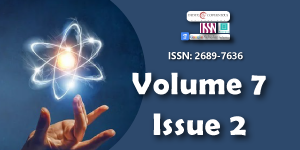Understanding Lorentz Utilizing Galilei: The Emergence of a Friendly Extended Special Relativity Theory that Admits Relativistic Multi-Particle Entanglement
Main Article Content
Abstract
Special relativity theory stems from the Lorentz transformation of signature (1,3). The incorporation into special relativity of the Lorentz transformations of signature (m,n) for all m,n∈N (n = 3 in physical applications) enriches the theory. The resulting enriched special relativity is a friendly extended special relativity that admits multi-particle entanglement, as demanded by relativistic quantum mechanics. The Lorentz transformation of signature (m,n) admits a novel physical interpretation induced by the intuitively clear interpretation of the Galilei transformation of signature (m,n) for all m,n > 1. In this sense we understand Lorentz utilizing Galilei in m temporal and n spatial dimensions, resulting in the emergence of multi-particle entanglement that the enriched special theory of relativity admits. Remarkably, it turns out that, for any m,n∈ℕ, the group of Lorentz transformations of signature (m,n) is the symmetry group that underlies any multi-particle system that consists of m n - dimensional entangled particles.
Downloads
Article Details
Copyright (c) 2024 Ungar AA.

This work is licensed under a Creative Commons Attribution 4.0 International License.
Ahn D, Lee HJ, Hwang SW, Kim MS. Is quantum entanglement invariant in special relativity? [Internet]. 2003 [cited 2024 Jun 3].
Alsing PM, Fuentes I. Observer-dependent entanglement. Classical and Quantum Gravity. 2012 Nov 23;29(22):224001.
Caban P, Hiesmayr BC. Bound entanglement is not Lorentz invariant. Sci Rep. 2023 Jul;13.
Gingrich RM, Adami C. Quantum entanglement of moving bodies. Phys Rev Lett. 2002 Dec 30;89(27):270402. doi: 10.1103/PhysRevLett.89.270402. Epub 2002 Dec 16. PMID: 12513186.
Li L, Li X, Zhang B, You L. Enhancing test precision for local Lorentz-symmetry violation with entanglement. Phys Rev A. 2019 Apr;99(4):042118.
Rembieliński J, Smoliński KA. Quantum preferred frame: Does it really exist? EPL (Europhysics Letters). 2009 Oct 2; 88(1):10005.
KLOE-2 Collaboration. Test of CPT and Lorentz symmetry in entangled neutral kaons with the KLOE experiment. Phys Lett B. 2014; 730:89-94.
Di Domenico A. Search for CPT and Lorentz-symmetry violation in entangled neutral kaons. In: Proceedings of the Seventh Meeting on CPT and Lorentz Symmetry; 2017. World Scientific. 97-100.
Dzuba VA, Flambaum VV, Safronova MS, Porsev SG, Pruttivarasin T, Hohensee MA, Haffner H. Strongly enhanced effects of Lorentz symmetry violation in entangled Yb+ ions. Nat Phys. 2016 May;12(5):465-468.
Shaniv R, Ozeri R, Safronova MS, Porsev SG, Dzuba VA, Flambaum VV, Haffner H. New methods for testing Lorentz invariance with atomic systems. Phys Rev Lett. 2018 Mar 9;120(10):103202.
Shi Y. Some exact results on CP and CPT violations in a C=-1 entangled pseudoscalar neutral meson pair. Eur Phys J C. 2013; 73:2506.
Silarski M, KLOE-2 Collaboration. CPT and Lorentz symmetry tests with entangled neutral kaons at KLOE/KLOE-2. J Phys Conf Ser. 2014; 556:012071.
Zhuang M, Huang J, Lee C. Entanglement-enhanced test proposal for local Lorentz-symmetry violation via spinor atoms. arXiv preprint arXiv:2201.11366. 2022.
Horodecki R, Horodecki P, Horodecki M, Horodecki K. Quantum entanglement. Rev Mod Phys. 2009 Apr;81(2):865-942.
Hamermesh M. Group theory and its application to physical problems. Addison-Wesley Ser Phys. Reading, Mass.-London: Addison-Wesley Publishing Co., Inc.; 1962.
Ungar AA. Beyond Pseudo-Rotations in Pseudo-Euclidean Spaces: An introduction to the theory of bi-gyrogroups and bi-gyrovector spaces. Math Anal Appl. Elsevier/Academic Press; 2018.
Horn RA, Johnson CR. Matrix analysis. Cambridge: Cambridge University Press; 1990.

